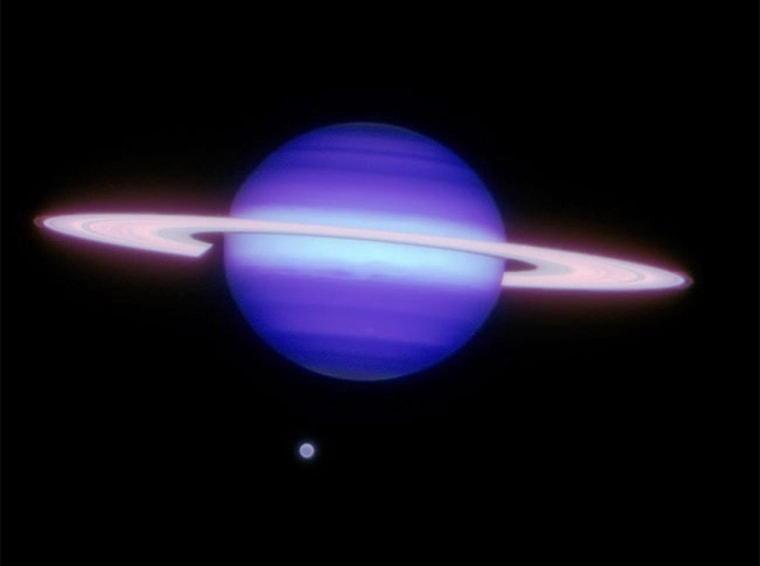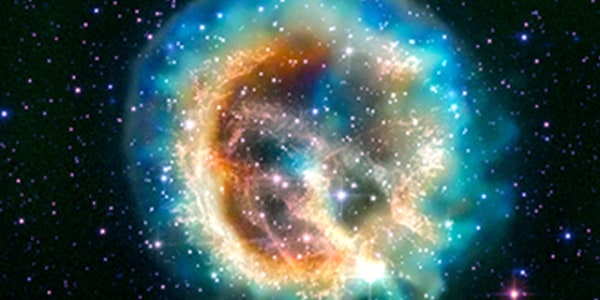A tropical storm was not what astronomers expected to see when they pointed their telescopes toward the equator of Saturn's moon Titan last summer.
But that's exactly what they found on this beguiling moon, home to a weather system both eerily familiar and perplexingly strange. The discovery was announced today.
In many ways Titan's climate resembles that of Earth, but instead of a water cycle, Titan has a methane cycle. Clouds, rain and lakes all exist on Titan, but they are all made of methane. In the moon's frigid climate, any water is frozen into rock-hard ice.
Clouds of vaporized methane are not uncommon on Titan, though they have never before been observed in Titan's tropics. But in April 2008, astronomers using the Gemini North telescope and NASA's Infrared Telescope Facility in Hawaii spotted a severe storm covering almost 2 million square miles (3 million square km) over the equator.
"The models predicted that the equatorial region should be very dry and should not support cloud formation," said astronomer Henry Roe of Lowell Observatory in Arizona. "But this episode created clouds over both the equator and the south pole. We don't know what set off that sequence, but something gave a pretty good kick to the atmosphere."
Scientists suspect the storm's trigger may have been some kind of geologic activity on the moon's surface, such as a geyser or new mountain range forming. Atmospheric effects may also have set off the storm.
Whatever the cause, once the clouds were established they seem to have spread throughout Titan's atmosphere in waves.
The situation is a new wrinkle in the study of this complex moon.
"It's an amazing place because it is deeply familiar to us, being form Earth, in terms of the processes - clouds forming, rainfall, carved out channels on the surface, huge fields of what look like sand dunes," Roe told SPACE.com. "But the materials that are involved are quite alien."
Slideshow 16 photos
Month in Space: July 2009
Scientists hope to learn more as Saturn's 30-year-long orbit plays out a full rotation of seasons on the moon. NASA's Cassini spacecraft is currently in orbit around Saturn, but it only flies by Titan once every six weeks or so. In the meantime, ground-based telescopes can keep a near-steady eye on the moon.
"We really need to keep observing Titan in detail for many more years in order to get a true understanding of how its seasons change," Roe said.
The researchers, led by Emily Schaller of the Institute for Astronomy in Hawaii (now at the University of Arizona), detail the new finding in the August 13 issue of the journal Nature.

